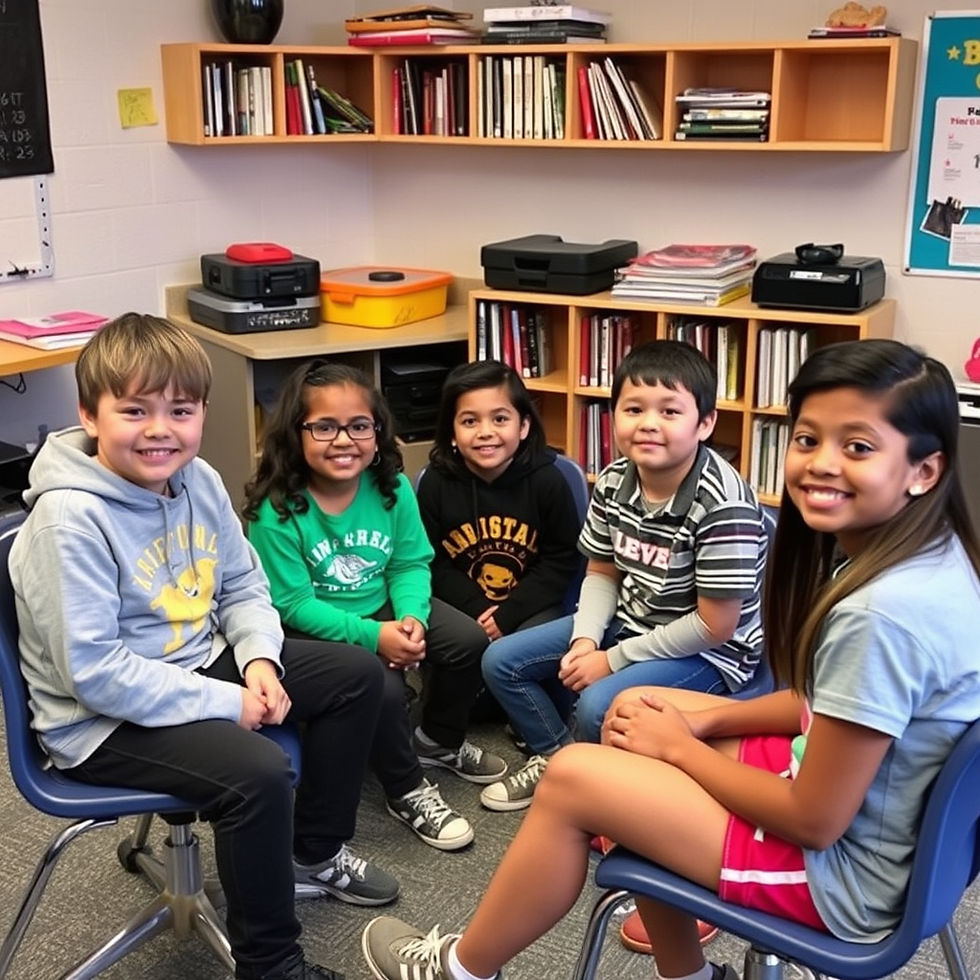How to Optimize Student Engagement-Successful Teaching Strategies used in Autism specific Settings
- Rosalie.
- Sep 24, 2015
- 4 min read
Updated: Aug 7

Motivation and Engagement in a classroom of students with autism
When you are new to autism, you may find it difficult to get students to come to their chairs or sit for any length on time, during group schedules or table tasks and activities. Motivation is key to teaching autistic students and the teacher has to be very aware of autistic students' likes and dislikes.
Engaging Autistic Children at Group Times.
Motivators
Motivators are your pot of gold! Use them and then reduce them when children’s skills in attending and engaging in group schedules are developing. Use them as you do with mainstream children and rewards-lots in the beginning and fewer as the year goes on, and children show self-motivation.
Bubbles

I have not met one child who did not like bubbles in the 11 years I taught in an autistic setting. It can be simple- one small container and each child gets a turn where the teacher blows the bubbles in his direction. This also teaches waiting and turn taking, as well as sitting in a group.
Remember to put bubbles on the day schedule. Autistic children attend well to the day or session schedule and will come to sit down if they see the visual for bubbles displayed.
You can develop this skill further by asking the child to pop the bubbles, clap the bubbles, blow the bubbles away etc. This is a good opportunity to teach communication skills ie. action words or positional language, such as up and down. So you can display the actions with Boardmaker visuals and show children what they are expected to do. This will lead to children making choices as to the action they will do.
There are many different types of bubble blowers on the market- wand bubble sticks or battery driven bubble maker toys where children interact with the toy to make bubbles.
Bubble recipe- there are various recipes online but when I was desperate for bubble solution I found dishwashing detergent and water mixed with sugar to be successful.

Sparklers
I used sparklers with music and used words while moving them about. For example, up, down, around or circle, above.
Make sure you keep a safe distance from the children so sparks do not get near them. We used them often and children loved them.
Make a playdough birthday cake, when practicing social skills, and use the sparklers instead of candles.
Remember to use the word ,visual, or Finish Box so that children get used to hearing and seeing Finish to signify the end of something. Sometimes, children with ASD have a difficult time with the word “Finish” as it is often used to signify that an activity they are doing and enjoy is finished and they often get upset. So it is important to use ‘finish’ in different settings that are not upsetting.
Candles

I used to make a playdough cupcake and put a candle/s in it. It could be part of a settling session or a social skills lesson ie. practicing singing “Happy Birthday’, or oral motor practice with blowing. (Blowing is quite difficult for many students.)
Once again, have the visuals on the board. You may have 2 or 3 quick settling activities in one line on the day schedule board e.g. Bubbles, then Candles. You will also be practicing the social skills of sitting and waiting, and turn taking.
Stimmy toys

There are a wide variety of these toys available at very cheap prices in discount shops. Some children will love a particular type of toy ie. a rubber squishy toy, while other children will show no interest at all.
This is a good opportunity to use Yes/ No so that children who do not want a turn squeezing a toy can choose the No card, if they are non-verbal. So always have Yes/ No cards available on a small board nearby. It is empowering and calming for a child to know that he can say ‘no’ at an appropriate time.
If you give the children the opportunity to say ‘no’ sometimes and tell or show the children that they will have choices in that session, it is more likely that they will comply with your requests to do other things later on when Choices is not part of the session
Make or build something with the children as a group.

Making your own motivators with the students
I used to make things with the group as a whole, before other lessons that were timetabled. For example, I would choose a jigsaw that was motivating and put it together as a group or I would say ‘Let’s build a fence to keep the animals in’. I would sort the animals into groups, or ask children to do so. Then the children would have turns in building fences around the animals. This helped with their fine motor, waiting skills, and social skills as they learnt how to build one project together. When I did it often, I saw the children replicating this play at indoor play as they sat in small groups building farms. Repetition is important before they initiate the play at other times.
The possibilities for this type of activity is endless as you can use it in maths, art, construction activities etc. to make things together.
You can view my other posts on my Home Page. Just click the button
Please remember to like it or share on social pages. Thank you.






















Comments